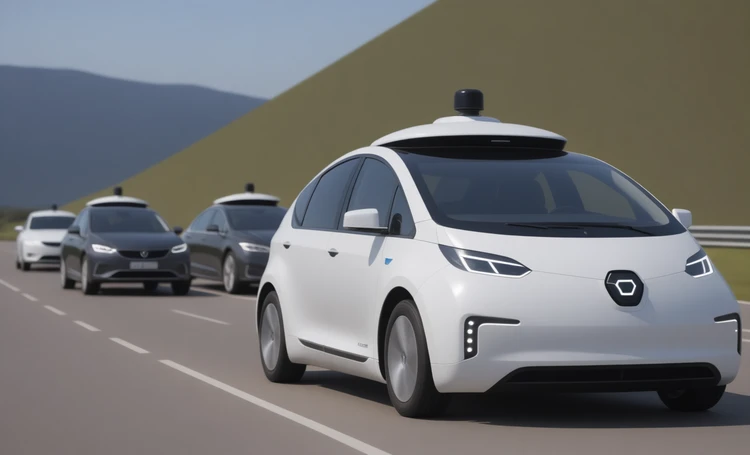🚗 Safety in the era of autonomous cars: myths and reality
The modern world is developing incredibly quickly, and autonomous cars are at the center of technological breakthroughs. View road safety products here to better understand how these innovations are changing the way we think about road safety. In this post, we'll look at what myths and stereotypes surround autonomous cars and what new safety technologies actually mean for drivers and pedestrians in Germany, America and Europe.
🛑 Myths about car safety
Distrust of technology
One of the most common myths is that cars cannot provide the same level of safety as a human driver. Many people believe that autonomous cars cannot adequately respond to unexpected situations on the road.
Revaluation of the human factor
Many accidents are caused by human error due to fatigue, distraction, or underestimation of danger. However, there is a myth that a human will always be better at driving a car than artificial intelligence.
Fear of the new
Often people are afraid of innovations simply because they are new and unknown. This myth stems from the fear of the unknown and the potential threat of machines running out of control.
🤖 Safety technologies in autonomous cars
Active safety systems
Autonomous cars are equipped with a variety of active safety systems, such as automatic braking, collision avoidance systems and low visibility control, which significantly reduce the risk of accidents.
Constant data update
Autonomous cars constantly collect and analyze data from sensors and cameras, allowing them to react instantly to changes in traffic conditions, which is often impossible for humans.
Interaction with infrastructure
V2X (vehicle-to-everything) technologies enable autonomous vehicles to communicate with other vehicles and road infrastructure, thereby improving road safety and efficiency .
📊 Statistics and research
Effectiveness studies
Multiple studies from leading technology institutes show that autonomous cars can significantly reduce the number of road accidents thanks to highly accurate sensors and algorithms.
Comparison with traditional cars
Statistics show that the majority of accidents are due to human error, while autonomous cars have the potential to significantly reduce this rate by automating driving processes.
Practical experience
The first cities where they began testing autonomous cars are already noticing positive trends in reducing the number of accidents and increasing road safety.
🔍 Myths and truths about security technologies
System failures
There is an opinion that safety technologies in autonomous cars are unreliable and can fail. However, statistics show that most systems have multiple redundant mechanisms, which makes them fault-tolerant.
Hacking and cyber security
The myth that autonomous cars are easy to hack is greatly exaggerated. Manufacturers are actively working to strengthen cybersecurity measures, as evidenced by many successful tests and certifications.
High expectations
Some believe that autonomous cars should be completely safe, and any incident is seen as a failure of the technology. However, the reality is that technology is constantly improving, and with each update the level of security increases.
🏛️ Legislative changes and autonomous cars
Adaptation of legislation
With the development of autonomous technologies, governments are forced to revise road legislation. New norms and standards are being developed to regulate the use of autonomous cars on the roads.
Responsibility for an accident
An important aspect is the question of who is responsible in the event of an accident involving an autonomous vehicle. Legislation seeks to define the scope of responsibility between car manufacturers and their users.
Technology standardization
International standards for autonomous vehicles are being developed to ensure their safe coexistence with traditional cars and pedestrians on and between urban roads.
💡 Security technologies: myths versus reality
Unmanned technology as the norm
The reality is that driverless technology has already become a part of our daily lives. Many driver assistance systems, such as adaptive cruise control and automatic parking aids, have been in use for a long time and have proven their reliability.
Integration into public transport
Many countries are already introducing or actively testing autonomous public vehicles. This allows not only to improve safety, but also to make transport more accessible to all segments of the population.
Active safety systems
Modern autonomous cars are equipped with a range of active safety systems that can prevent accidents before they happen. This includes collision avoidance systems, automatic braking and more.
🛠️ Technology development and the future of security
Artificial intelligence guarding security
Artificial intelligence (AI) plays a key role in the development of autonomous vehicles. AI algorithms are becoming smarter every day, allowing cars to better understand their environment and make more informed decisions in complex driving situations.
Rethinking traffic
With the increasing number of autonomous vehicles on the roads, infrastructure and traffic regulations will be adapted to ensure maximum safety and efficiency of travel.
Proactive Software Update
Cars of the future will be constantly connected, allowing manufacturers to send software updates in real time, eliminating bugs and improving vehicle safety.
🎓 Conclusions and results
Reassessment of myths
We've debunked a number of myths related to the safety of autonomous vehicles. Scientific research and practical experience show that the safety technologies of these vehicles are constantly being improved and become more reliable.
Legislative initiatives
Legislation is gradually adapting to new realities, creating a reliable basis for the safe coexistence of autonomous and traditional vehicles on the roads.
The future is innovation
Safety technologies continue to evolve, and every year autonomous cars become smarter and safer. We are on the threshold of a new era in automobile construction, where safety will be ensured not only by the design features of cars, but also by their ability to independently make decisions in difficult road conditions.



